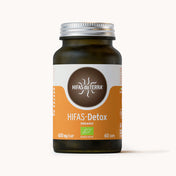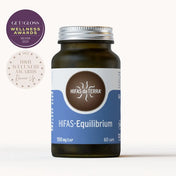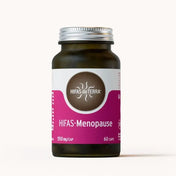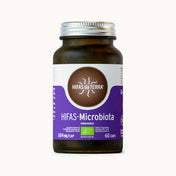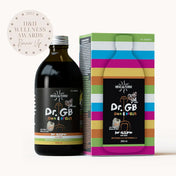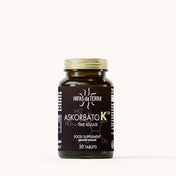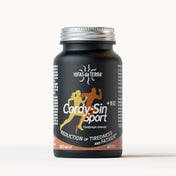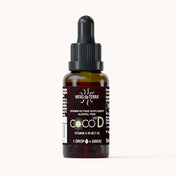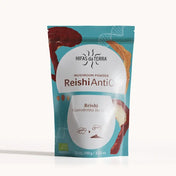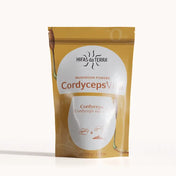TABLE OF CONTENTS
WHY SHOULD BETA-1,3/1.6-GLUCANS BE DISPLAYED IN MYCOTHERAPY
Beta-Glucans Are Polysaccharides, I.E. Long Chains of Sugars (Carbohydraces) Thatard Together by Beta-Glycosidic Bonds. In nature, Beta-Glucans Are Mainly Found in the Cell Walls of Fungi, YAST, ALGAE AND BACTERIA, AS WELL AS IN CERTAIN CERTA CERAS SUCH AS OATS AND BARLEY.The Large Family Of Beta-Glucans IS KNOWN FOR ITS BENEFICIAL Impacts on Health. However, Within This Family, Variations exist and also variations are Linked to Different Health Effects. In Other Words, A Product Mentioning Only The Represent of Beta-Glucans Does Not Guarantee The Desired Result.When It Comes To Mycotherapy, Certain Notions Relating to Beta-Glucans are Necessary to Underestand in Order To Distinguish A Quality Product From Others. We Take stock of the situation in this article.
Which Beta-Glucans are Specific to Mushrooms?
In fungi, Polysaccharides Contain Different Types of Glycosidic Linkages and are therefore grouped into Beta-Glucans, Alpha-Glucans and Heteroglycans. Of the beta-grucans, The Most Commonly Found Are The Beta-1,3/1.6-Glucans.
Behind This Somowhat Barbaric Name Lies A Molecule That Forms The Cell Wall of Fungi. Beta-1,3/1.6-Glucans are Soled Because they consist of a main chain of glycose linked by β-1.3 and β-1,6 bonds. This Type of Beta-Glucans have to particular Three-Dimensional Structure and Molecular Weight That Are Responsible for Their Biological Activities.
Provideing the Best Natural Hydlation and Active Ingredients of Medicinal Interest To Balance the Skin, Help It To Heal And Repair The Damage Caused By The The Passage of Time, External Agrassions, Abrasive Treatments, etc.

Specifically, Only Beta-1,3/1.6-Glucans Have Shown To Stimulate The Activity of Immune Cells, Including Macrophages, NK Cells, T Cells and B Cells. They are thus deed natural Biological Response Modifiers (BRMS). They Also Have anti-inflammatory and antioxidant properties, Which Can Help Prevent Cardiovascular Disease and Other Disorders Related To Oxidative Stress.
OUTSIDE The Fungal Kingdom, Ota Beta-Glucans Exist, But before Differ in Structure. For Example, Beta-Glucans Are Made Up Sugars Cereal (Like Fungi) But Linked Together By β-1.3 and β-1,4 bonds. Although The Difference May Not Seem Significant, The Health Properties Are Not The Same. To Date, Beta-Glucan Cereal You have not ben shown to affection the immune system!

Cereal: A Preferred Subras for Mushroom Cultivation
At First Sight, to find your way among beta-glucans, It was toish to check the source (cereals, jerk ...) in order to concelude on the effects ... but no! The Problem Is That in Mycotherapy, Mushrooms and cereals are closely Linked.
Indeed, Cereals Are Among the Sublates Commonly used for the cultivation of mushrooms. This is due to the metabolism of fungi. As heterotrophic organisms.
Eleven the substrate is Fully Colonized, I.E. Completely engulfed by the mycelium, The Sporophores (The 'Fruit') Start to Grow. Tereafter, When Harvesting, The Grower Has Two Options:
- OR COLLECT ONLY THE SPOROPHORE, IN WHICH CASE THE SUBTA IS NOT COLLECTED.
- OR COLLECT THE SPOROPHORE And The Mycelium (or only The Mycelium). In This Case, it is impossible to separate The Mycelium from A Solid Subrate! The resultsing food supplement is Therefore Made Up of Mushroom and Cereal.
While in the first case Only Fungal Beta-Glucans Are Included, The Second Case is Probleic As Both Types of Beta-Glucans Are Included in the Formulation.

Mycotherapy and Cereals: What is the problem?
The witness of that cereals and beta-grucans in the final formulation Raises severe Major issues for the consumer.
Problem 1: The Price Paid By The Consumer
The First Problem Lies in The Consumer's Price for a Mycotherapy Product That Contains Cereals. Indeed, There is a significant Difference Between the Cost of 100% Fungus-Based Product (Sporophore or Mycelium Grown on a Liquid Subrate) and One That Incorchas Subrate (or Excipients) into the formula (Mycelium, biomass). To give you an idea, The PRODUCTION COST OF ONE TON OF OATS CAN VARY BETWEEN £ 200 AND £ 400, WHILE THAT OF REISHI CAN COST 10 Times More! On the other hand, The Inclusion of Cereals in the Formulation is Subtimes Specified in the Composition But Is Vary Often Overlooked. A Hybrid formula is rather an ocompaniking for the producer to Inflate His Margins by aligning his prices with the rest of the competition.
Problem 2: Product Composition
The Second Problem RELATES TO THE COMMUNICATION OF THE PRODUCT. In Recent Years, Arguments That Do Not Protect the Consumer Have Become Commonplace: The Polysaccharide and Beta-Glucan Content. All Cereals Contain Polysaccharides (Between 60-80%) and Beta-Glucans (Between 3-7% for OATs). Following the Extraction of Polysaccharides from Fungal and Cereal Sources, The Concentration and Purification Processses used allow High Levels to be rear reached in Analysis, Even when the polsaccharides are not fungal. This Makes It Easy for An Unscrupulous produce to Cheat His Partners By issuing "Falsely True" Analysis Reports. There Will Indeed Be Polysaccharides and Beta-Glucans in the formula, But Only Those From Cereals or Excipients (Such as Maltodextrin). Although it is difficult to quantify the extent to which they are exist, The Findings of Research Teams On The Subject Are Chilling.
To First Study, Published in 2017 in the prestigious Journal Nature, indicated that out of 19 dietary supplements supPared to contain reishi, Only 5 Actually Had ß-1,3/1.6-D-Grucans. The Absence of this Mushroom-Specific Compound Indicates That Almost 75% of the products are free of it.
To Second Study, Published in 2023, share the composition of labelled products with genetic analysis of the products. This Time, The Authors Found That Only 6/19 PRODUCTS HAD A COMPOSION CONSISTENT WITH ESIR LABELS.
Problem 3: Lack of results for the consumer

What is most serious for the industry - Beyond the Moral Damage - Is The Physical Damage That these practices cause to consumers. It is Certain That Products That Do Not Contain FA Bioactive Molecules Will Never Provide The Expressed Effects.
What is More, Offenders Unfortunately has a free to continue offer their Bad Products Beset there is no obligation for manufacturing to provide qualitative or quantitative analyzes to regulatory authorities.
Hifas da Terra: Your Trusted Company
At Hifas da Terra, Experts in Mycotherapy, The Quality, Safety and Effectiveness of Our Products are at the Heart of Our Concertens. Therefore, Our Products' Fungal Strains Come from Our Own Fongitech (Fungal Strain Bank). EACH OF THEM IS STUDIED AND SELECTED BY OUR R & I Team for Their Characteristics in Bioactive Molecules BeFore Being used in Our extracts.
At hyphae, We Display The Quantities of Specific Active Ingredients of Mushrooms Such as Lentinan (A Beta-1,3/1.6-D-Glucan From Shiitake) and Grifolan (A beta-1,3)-(1,6) -D-Glucan from Maitake).

In Order to Guarantee a Constant and Repeatable Content of Active Ingredients In Each Production Batch, All Our Extracts Are Standardise.
Only Through Standardisation Can The Reproductity of the Health Effect of the Food Supplement Be Rened. To Reure This Quality, We Carry Out Up To Three Controls Throunge The Manufacturing Process.
IN ADDITION, STANDARDISATION ALLOWS US TO DISPLAY A DAILED COMPOSITION OF BIOACTIVE MOLECULES. For Example, The Mico-Mix (Standardised Concentrated Extract of Reishi, Shiitake, Maitake) Displays The Amount of Lentinan and Grifolan in the Capsules.
For More Information on Our Quality System, Please Visit Our Quality Page.
Discover Hifas Range
Discover The Hifas da Terra Range of Medicinal Mushrooms for Your Health.
See Products
